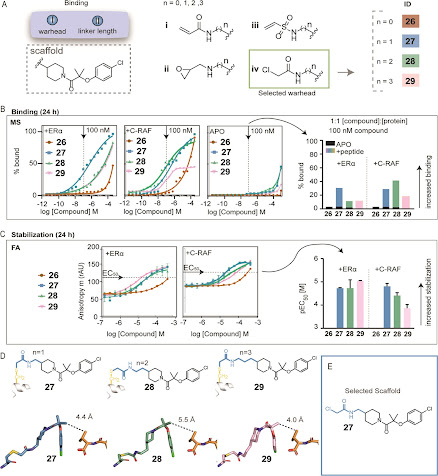N Engl J Med 2023; 389: 710–721
DOI: 10.1056/NEJMoa2303810
BACKGROUND
Divarasib (GDC-6036) is a covalent KRAS G12C inhibitor that was designed to have high potency and selectivity.
METHODS
In a phase 1 study, we evaluated divarasib administered orally once daily (at doses ranging from 50 to 400 mg) in patients who had advanced or metastatic solid tumors that harbor a KRAS G12C mutation. The primary objective was an assessment of safety; pharmacokinetics, investigator-evaluated antitumor activity, and biomarkers of response and resistance were also assessed.
RESULTS
A total of 137 patients (60 with non–small-cell lung cancer [NSCLC], 55 with colorectal cancer, and 22 with other solid tumors) received divarasib. No dose-limiting toxic effects or treatment-related deaths were reported. Treatment-related adverse events occurred in 127 patients (93%); grade 3 events occurred in 15 patients (11%) and a grade 4 event in 1 patient (1%). Treatment-related adverse events resulted in a dose reduction in 19 patients (14%) and discontinuation of treatment in 4 patients (3%). Among patients with NSCLC, a confirmed response was observed in 53.4% of patients (95% confidence interval [CI], 39.9 to 66.7), and the median progression-free survival was 13.1 months (95% CI, 8.8 to could not be estimated). Among patients with colorectal cancer, a confirmed response was observed in 29.1% of patients (95% CI, 17.6 to 42.9), and the median progression-free survival was 5.6 months (95% CI, 4.1 to 8.2). Responses were also observed in patients with other solid tumors. Serial assessment of circulating tumor DNA showed declines in KRAS G12C variant allele frequency associated with response and identified genomic alterations that may confer resistance to divarasib.
CONCLUSIONS
Treatment with divarasib resulted in durable clinical responses across KRAS G12C–positive tumors, with mostly low-grade adverse events. (Funded by Genentech; ClinicalTrials.gov number, NCT04449874.)






